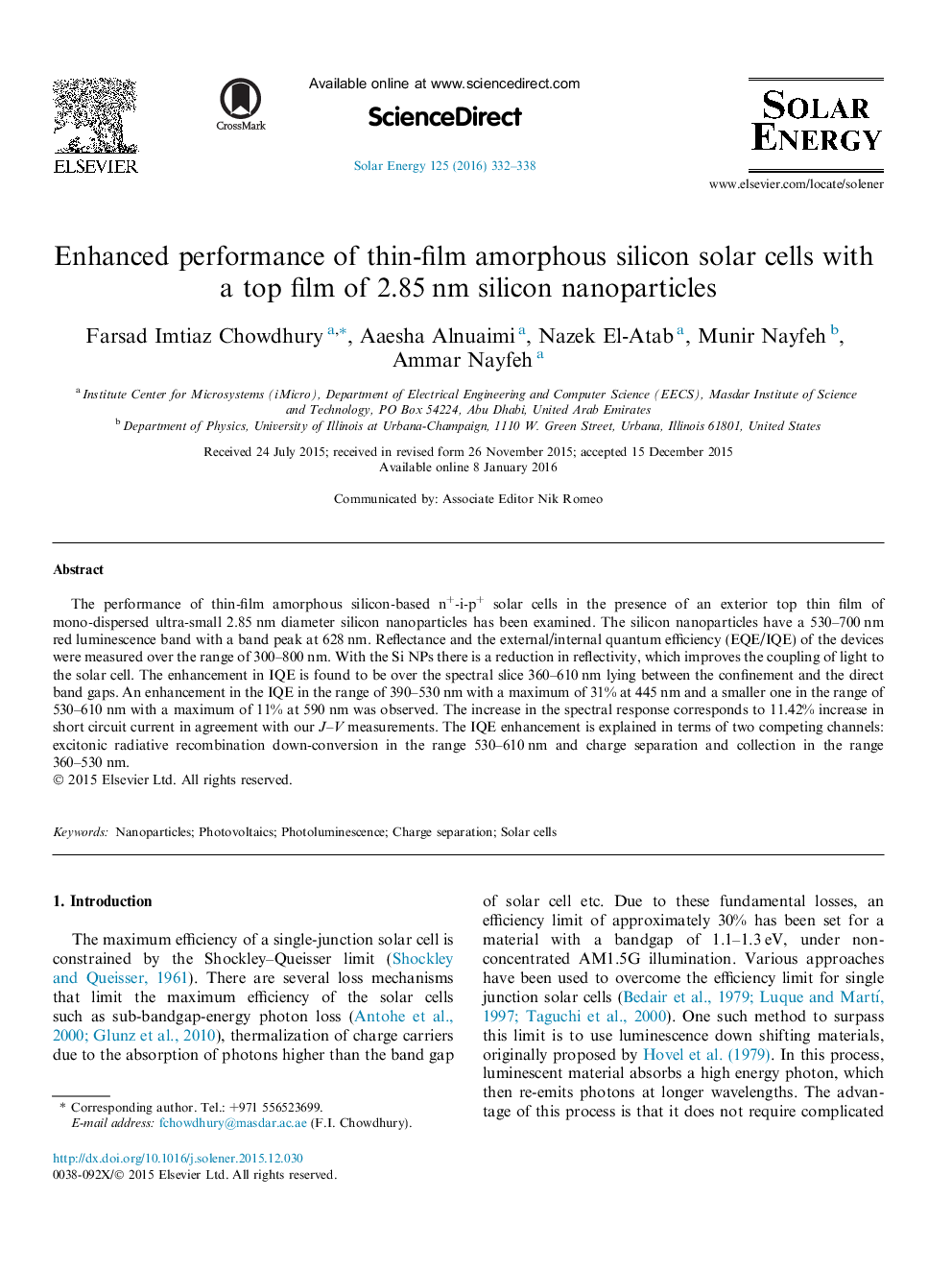| Article ID | Journal | Published Year | Pages | File Type |
|---|---|---|---|---|
| 1549499 | Solar Energy | 2016 | 7 Pages |
Abstract
The performance of thin-film amorphous silicon-based n+-i-p+ solar cells in the presence of an exterior top thin film of mono-dispersed ultra-small 2.85Â nm diameter silicon nanoparticles has been examined. The silicon nanoparticles have a 530-700Â nm red luminescence band with a band peak at 628Â nm. Reflectance and the external/internal quantum efficiency (EQE/IQE) of the devices were measured over the range of 300-800Â nm. With the Si NPs there is a reduction in reflectivity, which improves the coupling of light to the solar cell. The enhancement in IQE is found to be over the spectral slice 360-610Â nm lying between the confinement and the direct band gaps. An enhancement in the IQE in the range of 390-530Â nm with a maximum of 31% at 445Â nm and a smaller one in the range of 530-610Â nm with a maximum of 11% at 590Â nm was observed. The increase in the spectral response corresponds to 11.42% increase in short circuit current in agreement with our J-V measurements. The IQE enhancement is explained in terms of two competing channels: excitonic radiative recombination down-conversion in the range 530-610Â nm and charge separation and collection in the range 360-530Â nm.
Related Topics
Physical Sciences and Engineering
Energy
Renewable Energy, Sustainability and the Environment
Authors
Farsad Imtiaz Chowdhury, Aaesha Alnuaimi, Nazek El-Atab, Munir Nayfeh, Ammar Nayfeh,
